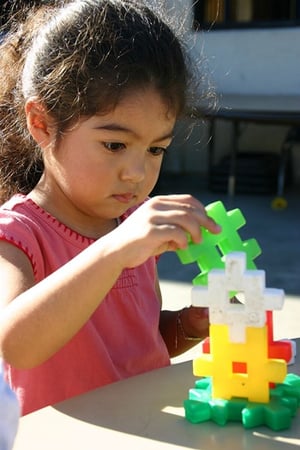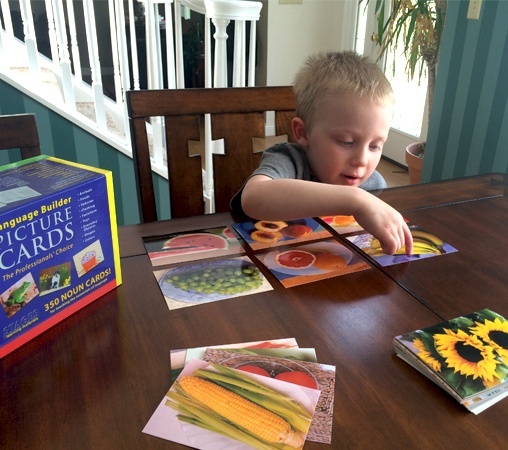Effective Treatment for Autism: It’s Never Too Early to Start
There are many promising treatments for Autism Spectrum Disorder (ASD). Decades of research and a recent synthesis of 6 major research reviews indicate that the therapies listed below are all based on solid research.
While there is no “cure” for autism, treatment can greatly reduce symptoms for many children and help them make meaningful progress as well as promote independence and improve quality of life. Intensive Behavioral Therapy, explained below, has the most substantial research base of all treatment strategies. Experts encourage parents to focus on this type of treatment as soon as possible, while exploring other possibilities.

An initial diagnosis of ASD can feel overwhelming to any parent, but in the process of confirming a diagnosis a treatment team will be assembled to assist you in making treatment decisions that will be the best match for your child. While professionals can help advise you, it is important to familiarize yourself with current treatments. You know your child better than anyone, and your input and participation are a vital component to any treatment approach.
Early intervention programs can help children from birth to 3 years old learn skills, even before an official ASD diagnosis has been made. If you think your child might have ASD or other developmental challenges, talk to your pediatrician as soon as possible.
Applied Behavioral Analysis (ABA)
In essence, ABA encourages positive behaviors and discourages negative behaviors. ABA helps children learn new skills and practice applying them. When used correctly and consistently, ABA can have a tremendous impact on a child’s success and positive functioning while minimizing negative behaviors. There is no downside to ABA, and it can be used to foster basic skills such as listening and imitating as well as complex skills such as reading or understanding another person’s perspective.
On the surface, ABA can appear easy to implement, but it is important to involve a professional in developing and carrying out a customized program for each child. Each child with autism is unique, and even making decisions about selecting a reinforcement for behavior – one child may like stickers and another likes puzzle pieces – is essential to having a successful outcome. While professionals can help set up a program and work with a child, parents play a critical role by incorporating ABA into as much of daily family life as possible.
The following are different types of ABA Treatment that are viewed as the most effective.
- Early Intensive Behavioral Intervention (EIBI) is a type of ABA for children younger than five, and frequently younger than three. Encouraging new research has shown that while intensive behavioral interventions work well with all children, children starting before the age of two were likely to make the most significant gains. For EIBI to be successful, children are provided with 20 to 30 hours of one-on-one therapy, and families are also incorporated into the process so that young children get as much exposure as possible.
- Pivotal Response Training (PRT) is a variation of ABA. It focuses on more comprehensive “pivotal” areas such as increasing a child’s motivation to learn, initiate communication, and monitor their own behaviors. This focus on motivation is crucial: a child who is motivated to change their behavior will experience more success. PRT is play-based and child initiated. In a typical session a child gets to choose what they want to talk about, play with, or learn. Tasks are varied and children are given natural reinforcers: an initiated communication asking for a glass of juice results in an actual glass of juice.
- Discrete Trial Teaching (Lovaas and Early Start Denver Models) consist of breaking down complex behaviors into smaller steps and prompting and rewarding each step involved in completing the behavior. Prompts are phased out as the child improves. The Lovaas Model involves 20-40 hours a week of therapy for children between the ages of 2-8. The Early Start Denver Model is an early intervention program designed for babies and toddlers that are between 12 and 48 months old. This model uses Discrete Trial Teaching in a play-based and relationship focuses environment. Research has shown that both these models produce significant improvements in language, adaptive behavior, and IQ.
- Verbal Behavior Therapy uses the principals of ABA by motivating a child to connect words with their purposes. Children learn that using certain words will help them get objects or other desired results. A student learning the word cookie will be rewarded with a cookie after saying the word and hearing the therapist repeat it.

Structured Teaching and Visual Learning
Structured Teaching is a treatment intervention that focuses on the physical organization of a setting. It includes having predictable schedules and teaching methods that focus on the individual student in order to make learning easier for children with ASD. TEACHH is one of the most popular of the Structured Teaching programs, and in addition to providing a structured environment TEACHH focuses on visual learning, a type of learning that is a strength for many children with ASD. Pictures are used to help children transition to different activities and to learn to communicate. Language Builder Cards are the most widely used photo language tools for teaching key language concepts to children with ASD or developmental delays.
Developmental Individual-Difference Relationship-Based Model (Floortime)
Floortime involves parents and therapists literally getting down on the floor so that they are at the child’s level while interacting. The focus is on following the child’s lead and playing with the child on their terms while gradually increasing the complexity of interactions. Floortime attempts to help children reach essential milestones including self-regulation, intimacy, two-way and complex communication, and emotional ideas and thinking. The focus is on emotional development using back-and-forth play interactions.
Occupational Therapy (OT) and Physical Therapy (PT)
OT focuses on the sensory integration issues that typically present in children with ASD. It is also used to help children with skills that involve fine-motor movements such as using utensils or cutting with scissors. OT for young children focuses on specific skills whereas OT for older children focuses on improving social skills and increasing independence. PT is used for gross motor skills, especially those skills that help children become aware of their body in space. Walking, balance, coordination, and sitting are the focus of PT therapy.
Speech Therapy
Speech therapy focuses on improving communication and social skills. Licensed speech-language pathologists provide speech therapy, but it can also be reinforced at home and at school. Learning communication skills in a natural environment, in addition to a therapist’s office, helps deepen and improve a child’s functional communication skills. For children with ASD who are unable to communicate verbally, speech therapy can teach the use of gestures, sign language, and picture communication programs.
Medications
Children with ASD commonly struggle with behavioral symptoms including aggression and self-injurious behavior. A qualified physician must be part of any decision about using pharmacological treatments for children with ASD. The FDA has approved two medications, Risperidone and Aripriprazole for the treatment of behavioral symptoms related to ASD and research indicates that they can be useful. By reducing temper tantrums or aggressiveness children can experience more success in an ABA or other treatment program.
All Children with ASD Can Benefit from Evidence Based Treatment
It is important to note that all children with ASD can benefit from treatment that is designed for their unique needs. The treatments listed above are all based on significant research that supports their use, but it is important to find qualified professionals to help design a program for your child. Start with your pediatrician and use the resources listed below.
While some parents turn to Complementary and Alternative Medicines (CAM) for treatment, these unproven interventions are not supported by current research. Sometimes these treatments can seem appealing, but they can be controversial and in some cases dangerous. Consult with a physician before trying alternative approaches.

Basic Information on Treatment Options:
- Center for Disease Control and Prevention ASD Treatment Page.
- The Autism Speaks 100 Day Kit for Newly Diagnosed Families of Young Children.
Recommended Books:
- Overcoming Autism by Lynn Kern Koegel, PhD and Claire LaZebnik
- Does My Child Have Autism? A Parents Guide to Early Detection and Intervention in Autism Spectrum Disorders by Wendy Stone, PhD, & Theresa Foy DiGeronimo, M.Ed
- Treatment of Autism Spectrum Disorders: Evidence-Based Intervention Strategies for Communication and Social Interactions edited by Patricia Prelock Ph.D. & Rebecca J. McCauley Ph.D.
![]()

L.F. Stebbins, M.Ed. M.L.I.S.
L.F. Stebbins has more than twenty-five years of experience in higher education with a background in library and information science, instructional design, research, and teaching. She has an M.Ed. from the Technology Innovation & Education Program at the Harvard Graduate School of Education and a Masters in Information Science from Simmons College. For twenty years she created and led media literacy and research skills programs for students and faculty at Brandeis University. Currently she is the Director at research4Ed.com and the Director for Research at Consulting Services for Education (CS4Ed). For more about Leslie visit LeslieStebbins.com.




